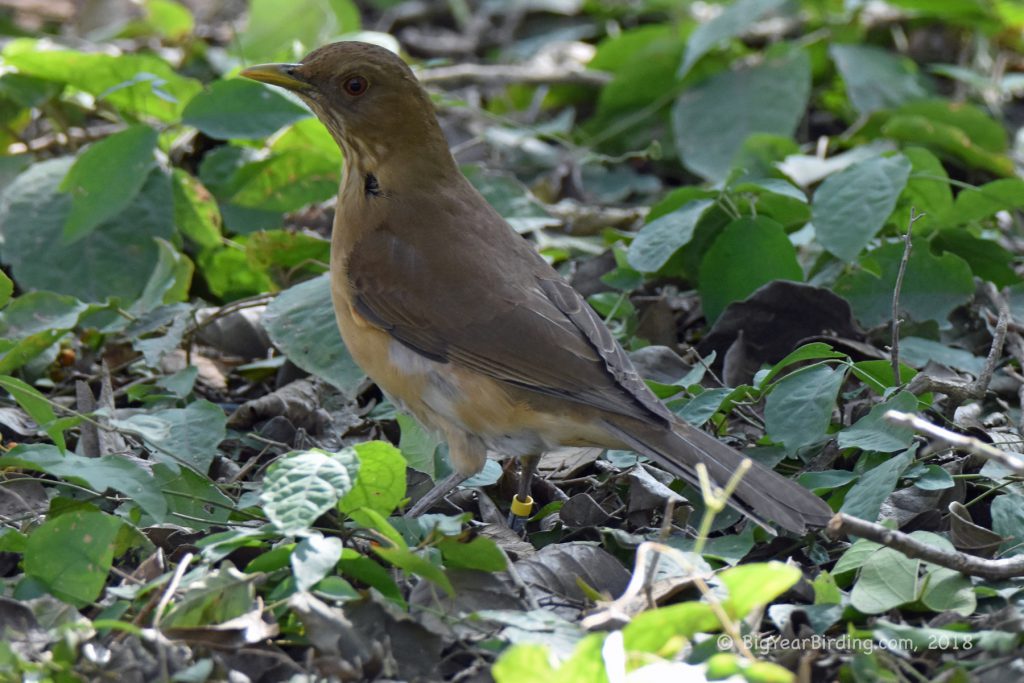
The Clay-colored Thrush (Turdus grayi) is a medium-sized bird found in Central America and parts of South America. They are typically around 9.5 inches long and weigh between 1.6 to 2.5 ounces. They have a relatively long, slender bill and a distinct whitish eye-ring. Their plumage is mostly brown with a distinctive clay-colored or cinnamon-brown throat and breast.

One of the distinguishing field marks of the Clay-colored Thrush is its song, which is a series of clear, flute-like notes that rise and fall in pitch. They are also known for their distinct and bold vocalizations, which can be heard throughout their range.
In terms of migration, Clay-colored Thrushes are considered to be year-round residents in parts of their range, but some individuals do migrate seasonally. In the United States, they are only found in southern Texas, primarily in the Rio Grande Valley, during the winter months.
The Clay-colored Thrush is a very adaptable species and can be found in a variety of habitats, including forests, gardens, and parks. They are often seen foraging on the ground for insects and fruit, and they will also eat snails and small lizards.

Despite their adaptability, habitat loss and fragmentation have led to declines in some populations of Clay-colored Thrushes. Conservation efforts are focused on protecting and restoring suitable habitat for this and other bird species throughout their range.

